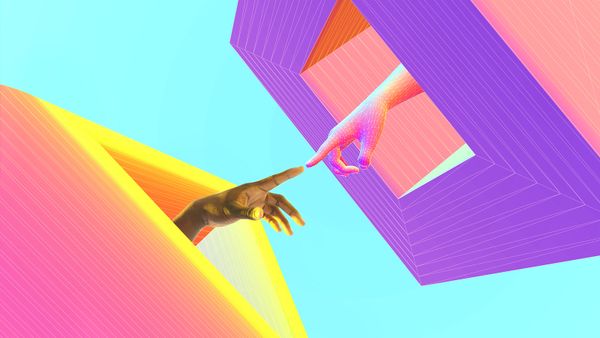Could there be a fourth spatial dimension? Well, that's a tricky question because we currently can't perceive or measure anything beyond the dimensions of length, width and height. Just as three numbers are required to pinpoint a location in a three-dimensional world, a four-dimensional world would require four.
At this very moment, you're likely positioned at a particular longitude, latitude and altitude. Walk a little to your left, and you'll alter your longitude or latitude or both. Stand on a chair in the exact same spot, and you'll alter your altitude.
Here's where it gets hard: Can you move from your current location without altering your longitude, latitude or altitude? You can't, because there's not a fourth spatial dimension for us to move through.
But the fact that we can't move through a fourth spatial dimension or perceive one doesn't necessarily rule out its existence. In 1919, mathematician Theodor Kaluza theorized that a fourth spatial dimension might link general relativity and electromagnetic theory [source: Groleau].
But where would it go? Theoretical physicist Oskar Klein later revised the theory, proposing that the fourth dimension was merely curled up, while the other three spatial dimensions are extended.
In other words, the fourth dimension is there, only it's rolled up and unseen, a little like a fully retracted tape measure. Furthermore, it would mean that every point in our three-dimensional world would have an additional fourth spatial dimension rolled away inside it.
String Theory: A Theoretical Framework for Additional Dimensions
String theorists, however, need a slightly more complicated vision to empower their superstring theories about the cosmos. In fact, it's quite easy to assume they're showing off a bit in proposing 10 or 11 dimensions, including time.
Don't let that blow your mind just yet. One way of envisioning this is to imagine that each point of our 3D world contains not a retracted tape measure, but a curled-up, six-dimensional geometric shape. One such example is a Calabi-Yau shape, which looks a bit like a cross between a mollusk, an M.C. Escher drawing and a "Star Trek" holiday ornament [source: Bryant].
Think of it this way: A concrete wall looks solid and firm from a distance. Move in closer, however, and you'll see the dimples and holes that mark its surface. Move in even closer, and you'd see that it's made up of molecules and atoms.
Or consider a cable: From a distance it appears to be a single, thick strand. Get right next to it, and you'll find it's woven from countless strands. There's always greater complexity than meets the eye, and this hidden complexity may well conceal all those tiny, rolled-up dimensions.
Yet, we can only remain certain of our three spatial dimensions and one of time. If other dimensions await us, they're beyond our limited perception — for now.


